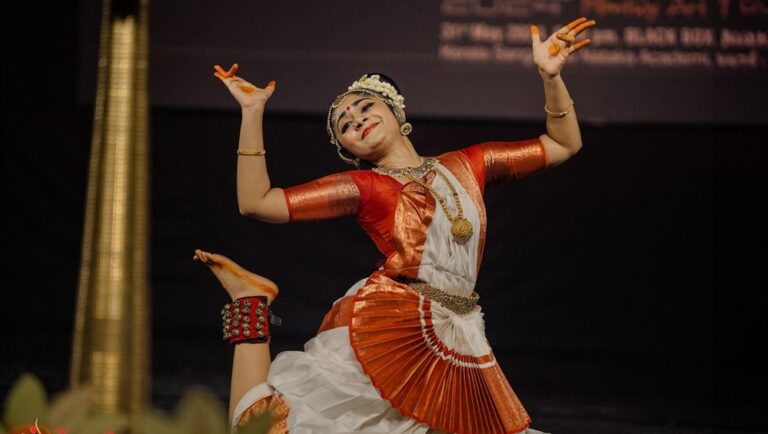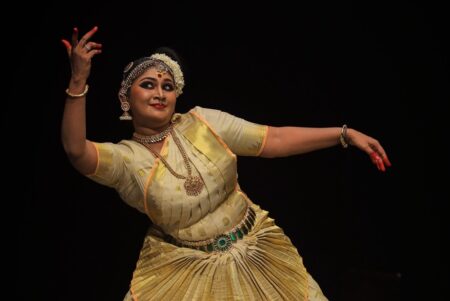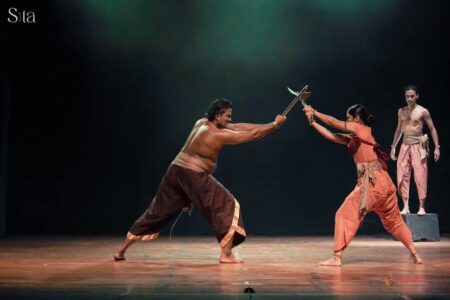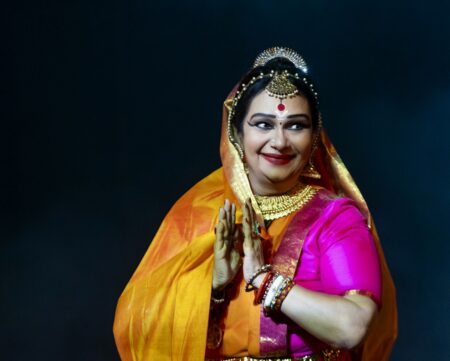Kalyani breathed new life into desi folk tale of Odiyan and Kavalam’s rain song.
Swati Tirunal played a crucial role in sanctifying Mohiniyattam by infusing it with Bhakti and romanticism, strongly influencing the dance form’s evolution. The revival of Mohiniyattam at Kalamandalam in the early 20th century owed much to Swati’s legacy. The repertoire during this initial phase included Swati Varnams, Padams, Tillanas, and the Cholkkettu. However, certain desi items like Kurathi, Mookuti, Chandanam, that held more cultural and folk elements of Kerala, were set aside during this revival.
Mohiniyattam researcher and choreographer Nirmala Paniker believed that these desi repertoires will reconnect Mohiniyattam with the bygone past and the female dancing and abhinaya traditions that existed in Kerala and revived many of them through her choreographies.
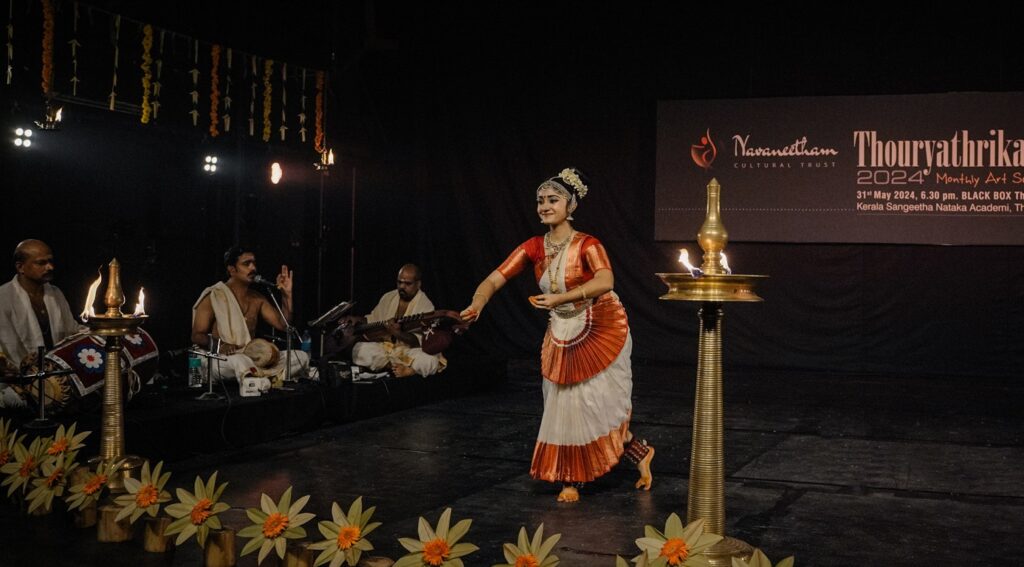
The recent performance by her student and emerging dancer Kalyani Harikrishnan Menon in Thrissur substantiated Paniker’s philosophy. The main two items she performed, ‘Odiyan’ and the rain song by Kavalam Narayana Paniker ‘Karukare Karmukil,’ infused the beauty of the folk flavor into her one and a half hour Mohiniyattam performance.
The program was conducted by Navaneetham Cultural Trust under their project Thouryatrikam.
Kalyani began her performance with a Ganapathi stuthi on baala ganesha in Nata ragam, Adi talam, followed by a varnam in praise of Shiva, narrating two tales – the destruction of Kama Deva and Shiva becoming Neelakanta. A narrative thread of bhakti ran through this piece, where the pure dance and abhinaya components of Mohiniyattam were perfectly balanced. Shiva was strangled by both Parvati and Vishnu. Before fainting, there was a brief moment of silence which created an intense experience. Kalyani’s advaus were technically perfect, and her movements were aesthetically appealing.
The next item, the famous rain song of Kavalam Narayana Paniker ‘Karukare Karmukil’ set to the Sopana raga Samanthamalahari and Adithalam, was exceptional for its presentation of various facets of rain. Paniker’s choreography blended Kerala desi items like tudichu kuli, Vallamkali, vanchipattu, mayilaatam, and ammanattam harmoniously into Mohiniyattam. The well-executed interplay between music and verses, with the echoic sounds in the song complemented by the musical instruments, created a refreshing effect of rain. The audience enjoyed this piece by lightly clapping to the beat which converted to heavy applause after its completion.
The final piece, Kurathi, explored the story of Kerala’s legendary character Odiyan. Odi, an occult practice among the traditional tribal communities in Kerala, and its practitioners, odiyans, were experts in shape-shifting into various animal forms and terrorizing people to death at night. Kurathi is an icon embedded in the Malayali psyche as a Dravidian figure. Scripted by Sreeja Kavanad, the story started with the dancer’s arrival as kurathi from the hill, happy in communion with nature, praising its beauty. She described the story of an odiyan and how he transformed into the desired animal shape of a bat, elephant, or lion. The vaytharis carried an indigenous fragrance as Kalyani fluently danced in tune with the shifting tempos, imitating the histrionics of various animals.
Vocal by Neelamperoor Sureshkumar, Veena by Murali Krishnan, and Maddalam by Kalanilayam Prakasan aptly complemented the performance.

